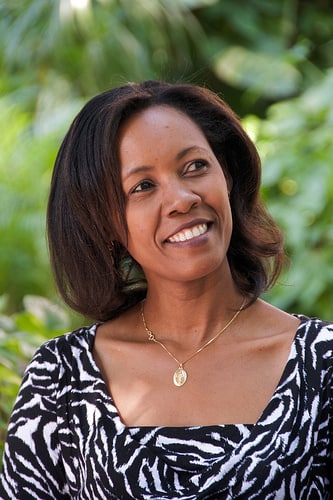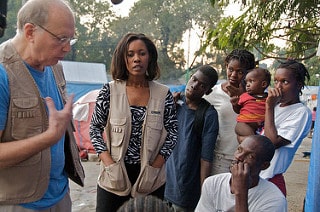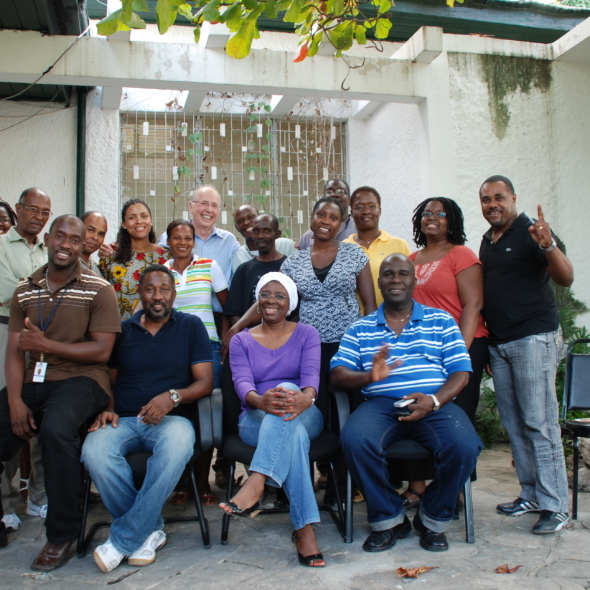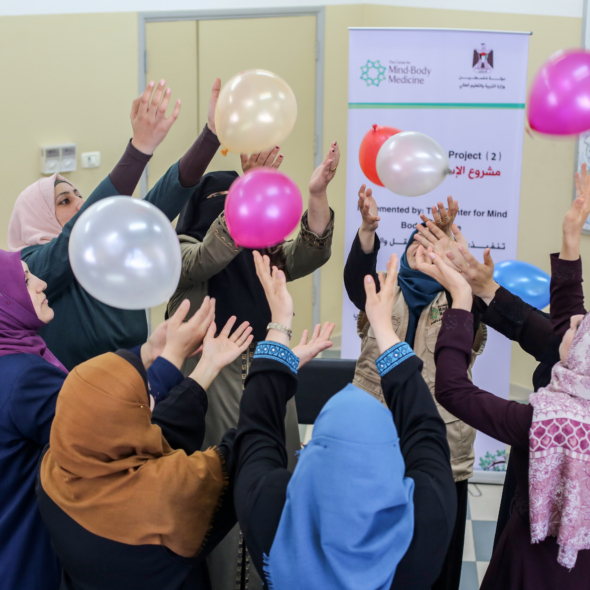CMBM Training in Port-au-Prince
Day One
Our team has been gathering for the last two days, long flights and sometimes long delays as well.
Jamil Atti is in from Gaza, Afrim Blyta and Jusuf Ulaj from Kosovo, and Naftali Halberstadt from Jerusalem- psychiatrists and psychologists who have lived through war and terrorism themselves, leaders of our program in their country, friends and brothers. From the US, Amy Shinal (our Clinical Director) Lynda Richtsmeier Cyr, Kathy Farah, Lora Matz and Jerrol Kimmel, physicians and psychotherapists–long time friends of 10 to 15 years, talented, adventurous, deeply committed to this international work.

Linda Metayer is our Haitian Program Coordinator, a psychologist with a degree in public health, as brave and courteous as she is smart and competent. Lee-Ann Gallarano, who organizes all of our work with trauma around the world, was working with Linda before we arrived with Jesse Harding, our newest staff member, who several years before worked with Lee-Ann when they were Peace Corps Volunteers in Mali. Tod and “B”, gifted documentarians, are filming us, and Mark, who has volunteered his time, is taking most of the still photos you’ll see on this blog.

We spend this first day “checking-in”, hugging, laughing, sometimes crying, as we tell the stories of our first meetings, recalling the power of soft belly breathing to help us relax in the middle of fire fights, of Afrim informing us in Gaza City that the 3AM earth shaking noises were in fact sonic booms. And everyone is speaking of the realization, growing over the years that, “You are my people,” “This is the work I want to do,” “I am at home.”
In the early evening Linda, Amy, Jesse and I walk with our camera crews into the sprawling tent camp across from our hotel- 10,000 people in the Champs de Mars. We had been told that “from the outside things look better.” There were fewer tents, less crowding. Up close the opposite turns out to be true- some people have indeed left, clearing out in terror of cholera, but everyone doubts they have found places much better. Meanwhile, moving from one clump of canvas, plywood, plastic and corrugated metal– one collection of shelters to another — we hear similar disturbing, dispirited stories: there is actually less food and water than there was four months ago and far more violence. Women, and muscular men as well, tell us that if and when they are able to sleep, it is with one eye open, alert to robbers who are often armed, and to rapists. The jobs cleaning rubble that once helped sustain these encampments have moved on, though no one knows exactly where.
Though some people are shy and wary, virtually everyone is gracious and within a few moments, eager to talk to us. Mothers tell us that so many of the children are “hyper” since the earthquake. We see them shuffling from foot to foot, eyes shifting with their bodies. The mothers say they have lost weight. When I ask about emotional problems everyone- men, women, teenagers- says they are angry. “What do you do?” I say. “I pray to God,” several say. “I take this medicine,” says a man raising a small bottle of homebrew. A woman says, troubled, but resigned, “I beat my children.” Several others nod.

As we move from one section of the camp to the other, two teenagers run past and jostle Linda. A moment later we see that her necklace is gone. She is a bit shaken, but philosophical, “They do it to eat,” she says. Other camps are likely to be somewhat better, but some are not and there are 10,000 people here. Walking back to our hotel I feel the weight of life here in Haiti, people stretched and pushed beyond breaking. I think of how much our work is needed, and I feel frustration along with everyone else. “Where is the organization?” I ask rhetorically, “The benefits of all the money the international community has committed?”


